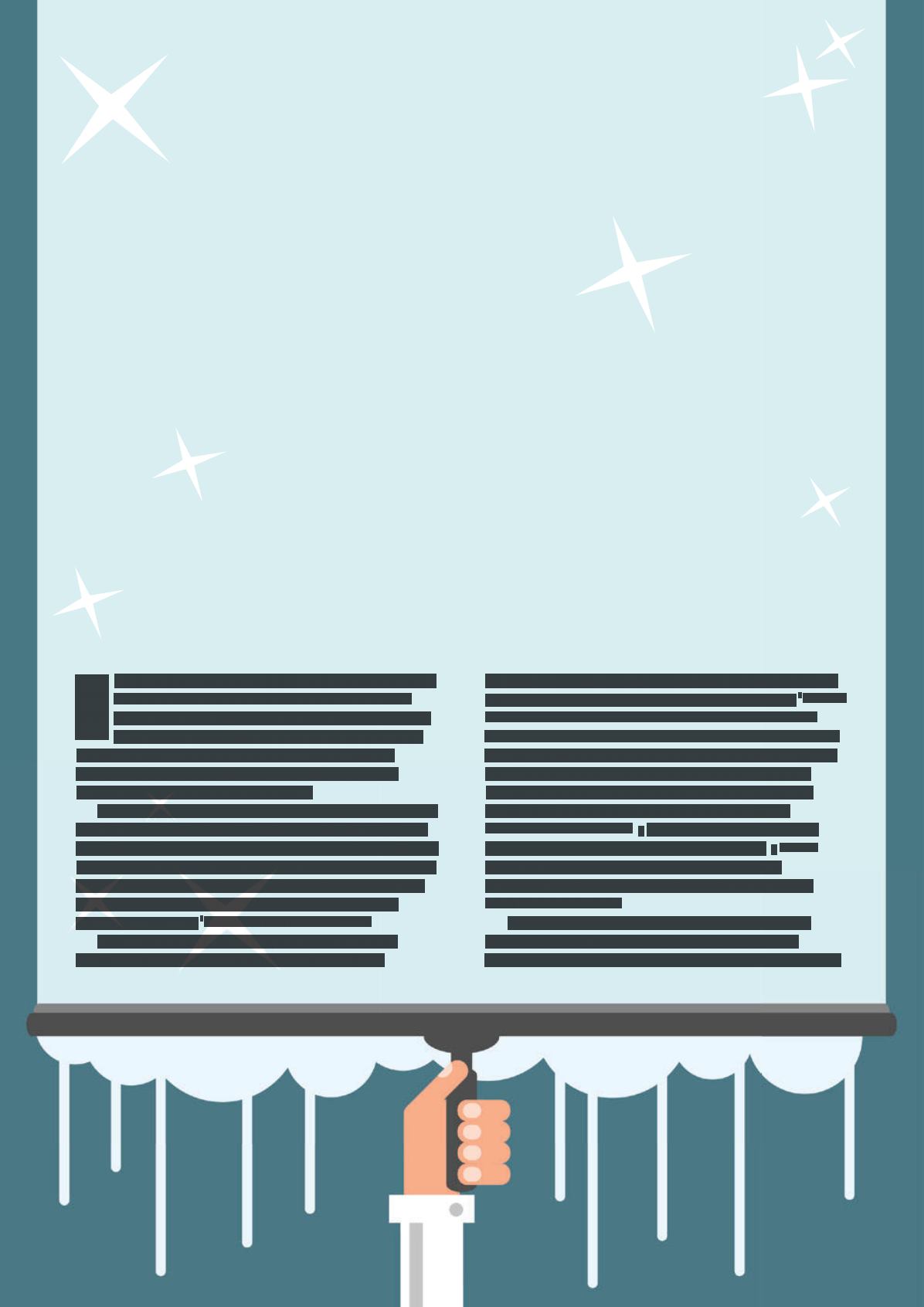
CLEAN
LEAN
EDWARD K. FOWLER, KIMRE INC., USA,
OUTLINES THE ADVANCES MADE IN GAS
CLEANING TECHNOLOGY IN RESPONSE TO THE LATEST ENVIRONMENTAL REGULATIONS.
A
ll fertilizer plants produce dust and gases, for example
ammonia and acid fumes, which must be removed
efficiently before venting to the atmosphere. Familiar
examples are granulation and prilling of nitrogenous
products, such as urea, which is the most widely used
fertilizer in the world. Phosphatic fertilizer production
produces dust and fluorine compounds.
Typical air treatment unit operations at fertilizer plants
are cooling, followed possibly by a venturi scrubber, then
either wet or dry ESP and finally packed bed wet scrubbing
before stack discharge of the treated gas. It is common for
customers to specify the maximum allowable amount of
dust and trace gases that can be present in the stack
emission as mg/Nm
3
of urea dust and ammonia.
Around the world, the industry has always been
challenged to meet current and future air quality
emissions standards set by regulatory bodies. Many new
projects are now requiring a maximum 10 mg/Nm
3
or less
urea dust in stack emissions. In addition to the move
towards ever-lower allowable emission levels, numerous
jurisdictions are requiring “clear stack” or “zero opacity”
stack emission. Reduction of stack emissions is very
important as dust, in the form of particulate matter,
causes unsightly haze and is also a health threat.
Particulate matter of 10
µ
m size (PM10) can reach the
alveoli of the lungs. Particulate matter of 2.5
µ
m size
(PM2.5) is considered even more hazardous and
suspended PM2.5 is typically found in mineral dusts,
smoke and acid mists.
Kimre has developed highly efficient gas cleaning
equipment with its cross/semi-cross flow scrubber
technology and using KON-TANE®/B-GON®/AEROSEP® as
89


